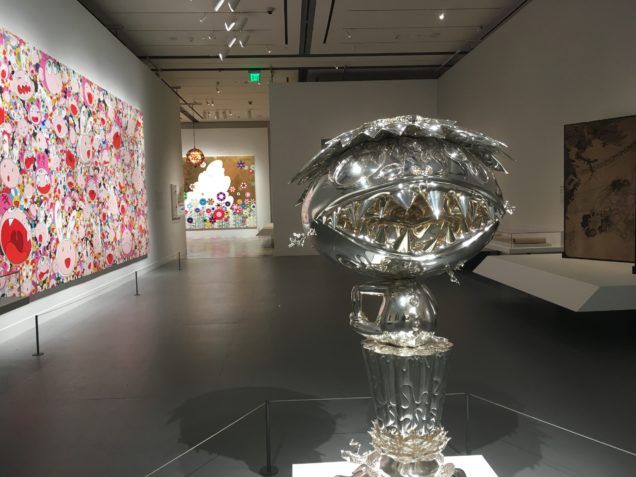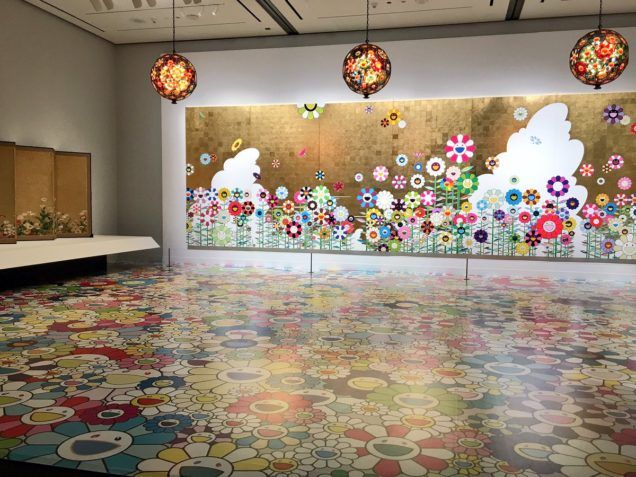Takashi Murakami: Lineage of Eccentrics

Museum of Fine Arts, Boston, MA
October 18, 2017 – April 1, 2018
The Museum of Fine Arts, Boston’s exhibition Takashi Murakami: Lineage of Eccentrics, organized in collaboration with Japanese art historian Professor Nobuo Tsuji, combines the contemporary art of Takashi Murakami with that of the MFA’s permanent Japanese art collection. The exhibition attempts to place Murakami’s work within a long historical lineage of Japanese artists who strayed away from tradition. While the selection of over thirty of the MFA’s exemplary pieces of Japanese masterpieces is stunning, many of them are overshadowed by Murakami’s extravagantly large (and social media worthy) images.
The exhibition provides a plethora of examples of some of the finest works of Japanese art, and makes the argument that Murakami, if not a part of this “Lineage of Eccentrics,” has taken inspiration from them. Placed within the same narrative space to create this lineage, the permanent collection works are grouped together in six categories: Superflat, Animation, Kazari, Asobi, Religiosity, and Eccentricity. While these images are prominently displayed, some, such as the folding screens in the Kazari room, become overshadowed by the work of Murakami (fig. 1). Though these works are meant to show Murakami’s inclusion in this lineage, the exhibition on the whole privileges Murakami’s work allowing the historic pieces to get lost along the way. Noting this favoring, the exhibition remains humorous and enjoyable making the art on display accessible and intriguing to all.

A highlight of the exhibition is the Kazari room which displays Murakami’s smiley face daisy mural Kawaii—Vacances: Summer Vacation in the Kingdom of the Golden with matching printed floor and light fixtures. Two brilliant folding screens from the MFA’s permanent collection frame the mural. These screens, Poppies(17th century, School of Tawaraya Sōtatsu) display floral scenes typical of seventeenth-century decorative art (fig. 2). On the wall leading to the room it is suggested that visitors take selfies and pictures with the work to prove they were here and to post on social media using the hashtag #mfaMurakami. Due to this and the monumental size of Murakami’s works, visitors largely ignore the screens and other surrounding works as they make their way towards a gift shop largely populated with expensive Murakami merchandise. The atmosphere of the exhibition then becomes less about lineage and more about Murakami, his work in relation to Japanese art, and the next great selfie.
Morgan Williamson